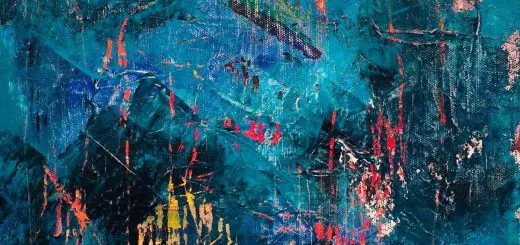Egyptian Deities: Symbolism in Ancient Rituals

Looking for more amazing products? Check out our online store and explore our collection here! Happy shopping!
Before diving in, please note: This post is for informational purposes only. If you’d like to know more about how we approach topics, feel free to check out our friendly Disclaimer Page.
Hey there, amazing readers! 
We’re committed to delivering quality posts, and your support (even just sticking around despite the ads) means everything to us. So, bear with us, and thanks for helping us keep the good vibes rolling. Now, on to the fun stuff!
TRANSLATE BUTTON AT THE END OF THE ARTICLE
Introduction to Egyptian Deities
In ancient Egypt, deities played a central role in the religious beliefs and daily life of the people.
Egyptian mythology was rich with gods and goddesses who represented various aspects of life, nature, and the cosmos.
These deities were worshipped through elaborate rituals, ceremonies, and offerings to ensure the favor and protection of the gods.
The symbolism associated with Egyptian deities was deeply ingrained in the culture and traditions of the civilization, influencing art, architecture, and social structure.
Ancient Egyptian Beliefs
Ancient Egyptians believed in a vast pantheon of gods and goddesses who controlled every aspect of the universe, from the cycles of nature to the afterlife.
These deities were seen as both benevolent and vengeful, capable of bestowing blessings or curses upon the people.
The Egyptian belief system was intricate, with each deity having a specific role and domain, such as Ra, the sun god, or Isis, the goddess of magic and motherhood.
The gods were often depicted in human or animal form, symbolizing their power and influence over different aspects of life.
Role of Deities in Daily Life
The Egyptian deities played a crucial role in the daily life of the people, with rituals and ceremonies dedicated to honoring and appeasing the gods.
Priests and priestesses acted as intermediaries between the people and the deities, performing sacred rites and offering sacrifices on behalf of the community.
The ancient Egyptians believed that by worshiping the gods and goddesses, they could ensure prosperity, fertility, and protection from harm.
Symbolism in Egyptian Rituals
Symbolism was integral to Egyptian rituals, with each gesture, offering, and incantation holding deep meaning and significance.
The use of symbols such as the Ankh, the Eye of Horus, and the Scarab beetle in religious ceremonies represented concepts like life, protection, and rebirth.
These symbols were believed to harness the power of the gods and convey messages to the spiritual realm.
The meticulous attention to symbolism in Egyptian rituals underscored the importance of tradition and belief in the divine.
Gods and Goddesses in Egyptian Culture
The gods and goddesses of ancient Egypt were revered and celebrated in all aspects of culture, from art and literature to festivals and ceremonies.
Each deity had a unique personality and story, with myths and legends shaping their portrayal in society.
Ra, the sun god, was worshipped for his life-giving warmth, while Osiris, the god of the afterlife, represented resurrection and eternal life.
The diversity of deities in Egyptian culture reflected the complexity and richness of the civilization’s religious beliefs.
Worship and Offerings to Deities
Worship of the Egyptian deities involved a range of rituals and offerings designed to honor and please the gods.
Temples dedicated to specific gods were centers of religious activity, where priests and devotees gathered to perform ceremonies and make sacrifices.
Offerings of food, incense, and precious objects were given to the gods as gifts, symbolizing gratitude and devotion.
The act of worshiping the deities was seen as a way to connect with the divine and seek blessings for health, prosperity, and protection.
Significance of Animal Symbolism
Animal symbolism was prevalent in Egyptian religion, with many gods and goddesses associated with specific animals that represented their attributes and powers.
For example, the cat was sacred to the goddess Bastet, symbolizing protection and fertility, while the ibis bird was connected to Thoth, the god of wisdom and writing.
Animals were believed to embody the spirits of the deities and were venerated for their connection to the divine.
The use of animal symbolism in Egyptian rituals added depth and meaning to the worship of the gods.
Rituals and Ceremonies in Ancient Egypt
Rituals and ceremonies were essential components of Egyptian religious practice, with each event carefully choreographed to honor the gods and invoke their blessings.
Festivals dedicated to specific deities were held throughout the year, featuring processions, music, dance, and offerings.
The annual inundation of the Nile, for example, was celebrated as a gift from the god Hapi, who brought fertility and abundance to the land.
The elaborate nature of Egyptian rituals reflected the importance of tradition and spirituality in the culture.
Influence of Deities on Art and Architecture
The Egyptian deities had a profound influence on the art and architecture of the civilization, with temples, statues, and paintings dedicated to the gods and goddesses.
Depictions of the deities in various forms adorned temples and tombs, serving as a visual representation of their power and presence.
The use of symmetry, symbolism, and hieroglyphics in Egyptian art reflected the divine inspiration believed to come from the gods.
The architectural marvels of ancient Egypt, such as the pyramids and temples, were constructed as monuments to the deities and symbols of eternal life.
Deities in Egyptian Mythology
Egyptian mythology was a rich tapestry of stories and legends featuring gods, goddesses, and mythical creatures that shaped the beliefs and traditions of the culture.
The creation myth of Atum, the primeval god, and the battle between Horus and Set were central themes in Egyptian mythology, illustrating the eternal struggle between order and chaos.
The stories of Isis and Osiris, the divine siblings who overcame death and betrayal, symbolized themes of resurrection and renewal.
The myths of the Egyptian deities provided moral lessons, explanations for natural phenomena, and a connection to the divine realm.
Impact of Deities on Social Structure
The Egyptian deities played a significant role in shaping the social structure of the civilization, with priests and priestesses holding positions of power and influence in society.
The temple complexes dedicated to the gods served as centers of education, healthcare, and administration, providing essential services to the people.
The pharaoh, as the divine ruler and representative of the gods on earth, was responsible for maintaining order and harmony in the kingdom.
The belief in divine protection and guidance from the deities underpinned the social hierarchy and political system of ancient Egypt.
Legacy of Egyptian Deities Today
The legacy of the Egyptian deities endures to this day, with their symbols, stories, and influence continuing to captivate people around the world.
The gods and goddesses of ancient Egypt have inspired countless works of art, literature, and film, showcasing their enduring appeal and relevance.
Modern interpretations of Egyptian mythology in popular culture, such as video games and comics, pay homage to the rich tradition of the deities.
The legacy of the Egyptian deities serves as a reminder of the enduring power of spirituality, mythology, and the human fascination with the divine.
Conclusion
In conclusion, the symbolism of Egyptian deities in ancient rituals was a foundational aspect of the civilization’s religious beliefs and cultural practices.
The gods and goddesses represented various aspects of life, nature, and the cosmos, influencing daily life, art, architecture, and social structure.
The meticulous attention to detail in Egyptian rituals, ceremonies, and mythologies underscored the importance of tradition and spirituality in the culture.
The legacy of the Egyptian deities continues to inspire and captivate people today, showcasing the enduring power of ancient beliefs and symbols in the modern world.

The Enlightenment Journey is a remarkable collection of writings authored by a distinguished group of experts in the fields of spirituality, new age, and esoteric knowledge.
This anthology features a diverse assembly of well-experienced authors who bring their profound insights and credible perspectives to the forefront.
Each contributor possesses a wealth of knowledge and wisdom, making them authorities in their respective domains.
Together, they offer readers a transformative journey into the realms of spiritual growth, self-discovery, and esoteric enlightenment.
The Enlightenment Journey is a testament to the collective expertise of these luminaries, providing readers with a rich tapestry of ideas and information to illuminate their spiritual path.
Our Diverse Expertise
While our primary focus is on spirituality and esotericism, we are equally passionate about exploring a wide range of other topics and niches 

To ensure we provide the most accurate and valuable insights, we collaborate with trusted experts in their respective domains 
Our blog originally focused on spirituality and metaphysics, but we’ve since expanded to cover a wide range of niches. Don’t worry—we continue to publish a lot of articles on spirituality! Frequently visit our blog to explore our diverse content and stay tuned for more insightful reads.
Hey there, amazing reader! 
Check out our store here and take a peek at some of our featured products below! Thanks for being awesome!













